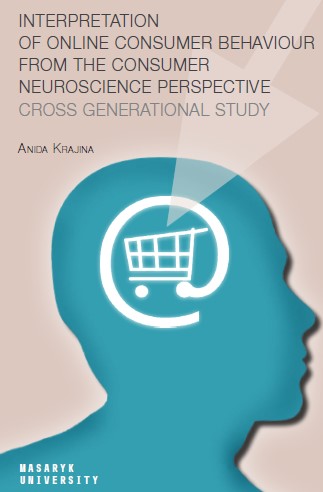Interpretation of online consumer behaviour from the consumer neuroscience perspective: Cross generational study
Interpretation of online consumer behaviour from the consumer neuroscience perspective: Cross generational study
Author(s): Anida Krajina
Subject(s): Business Economy / Management, Cognitive Psychology, Neuropsychology, Behaviorism, Methodology and research technology, Marketing / Advertising, ICT Information and Communications Technologies, Socio-Economic Research
Published by: Masarykova univerzita nakladatelství
Keywords: Cognitive neuroscience; consumer neuroscience; consumer behaviour; online behaviour; eye tracking technology; neuromarketing; marketing strategies;
Summary/Abstract: This monograph reveals the results of empirical research on consumer behavior, more precisely, visual attention and behavioral patterns in online environment and compare the results between two generations (Generation Y and Generation Z). Empirical research was conducted by using eye tracking, complemented with in-depth laddering interviews based on the means-end chains model, in order to examine the values of both generations. Research is embedded in the scientific framework of neuroscience and neuromarketing and has a mixed character (explanatory, exploratory and confirmative). The research objective covers two areas. The first concerns the discovery of cognitive and emotional processes based on visual attention in the online environment of two groups of consumers. In other words, the work focuses on identifying the differences between potential exposure and actual exposure for different types of content: text and graphics (image). Text and images are designed to potentially attract visual attention to certain content elements called call-to-action. Call-to-action is a digital element or tool that helps reinforce and engage customers, in particular by encouraging some desirable action in the online environment (typically in the case of e-shops, so-called like on Facebook, etc. (Adaptly, 2014). It serves as a strategy itself and is implemented particularly in the area of digital marketing. Therefore, the exposure as an expression in this study refers to both the type of content and the exposure of the elements of call-to-action in the content. Secondly, the work explores the relationship between the strength of stimuli and the memory effect. In other words, the goal is to provide a deeper understanding of the impact (or relationship) of the stimulus strength (image versus text) on memory, and to determine whether the preferred content is positively linked to consumer memory. Retrospective interviews are used as a complementary method to eye tracking, and help participants to verbalize experiences, recall process, explain both decision-making and reasons why the attention has been devoted to some elements, and not to others. The results of both approaches lead to better understanding of consumer behavior in theory and optimizing online content in practice.
- E-ISBN-13: 978-80-210-9110-8
- Page Count: 194
- Publication Year: 2019
- Language: English
- eBook-PDF
- Table of Content
- Introduction

